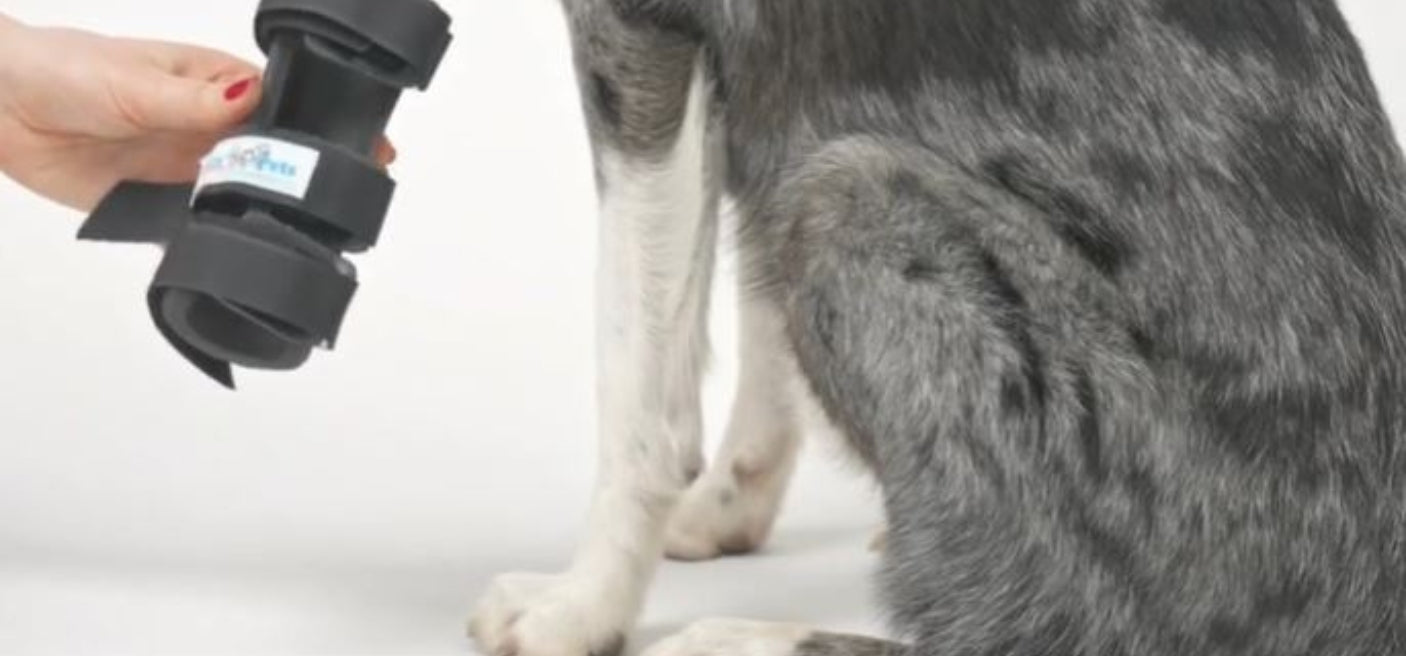Veterinary professionals may recommend or utilise splints for a variety of reasons to aid in healing animals. Splints are usually applied below the stifle (knee) on the hind leg, or below the elbow on the front leg. They provide protection and support to an injured area, while keeping the leg in a normal walking angle.
The purpose of a well-fitting splint is to prevent movement of an injured area, while providing comfort and support to weakened or unstable joints. The support of a splint allows weight bearing of the affected limb, while preventing sores and other potential trauma to the injured area or joint during the healing process. Speak with your veterinary professional to see if your pet is a candidate for a
splint.
Forelimb Common Conditions that May Benefit from Splints:
- Osteoarthritis of the carpal or metacarpal joints
- Degenerative Joint Disease (DJD)
- Polyarthritis
- Soft tissue injuries to carpal or metacarpal tendons/ligaments
- Carpal hyperextension
- Carpal or metacarpal joint instabilities or malformations
- Brachial plexus or radial nerve damage injuries
- Neurological conditions causing knuckling of paw
- Post-surgical protection
Hind Limb Common Conditions that May Benefit from Splints:
- Osteoarthritis of the tarsal or metatarsal joints
- Degenerative Joint Disease (DJD)
- Polyarthritis
- Soft tissue injuries to tarsal or metatarsal tendons/ligaments
- Achilles tendon injury
- Tarsal hyperextension
- Tarsal or metatarsal joint instabilities or malformations
- Neurological conditions causing knuckling of paw
- Post-surgical protection
If your pet is a candidate for a splint, it will require extra care and attention on your part as the pet owner. Knowing how to monitor the splint makes for a well-informed pet owner.
Let's review a few splint information points:
- Do not allow your pet to chew on the splint.
- Splints must remain clean and dry to prevent moisture sitting against the skin.
- If the splint gets wet, allow it to fully dry before reapplying.
- It€™s a good idea to check your pet's toes daily for any swelling. If the toes become cool and/or puffy, it's possible that the splint has been applied too tightly and is impairing the circulation of the limb and needs to be removed.
- If your pet develops chafing of the skin in any area due to rubbing of the splint, you may have to add some padding or baby powder to the affected area.
- As always, contact your veterinarian with any immediate concerns.
Splints can be vital to the healing process for our beloved pets. They provide protection, support, and comfort to weakened or unstable areas. Often they are a long-term solution to a degenerative problem, where otherwise a pet may struggle to walk. Consult with your veterinary professional to discuss the benefits a splint may offer your pet.


Leave a comment